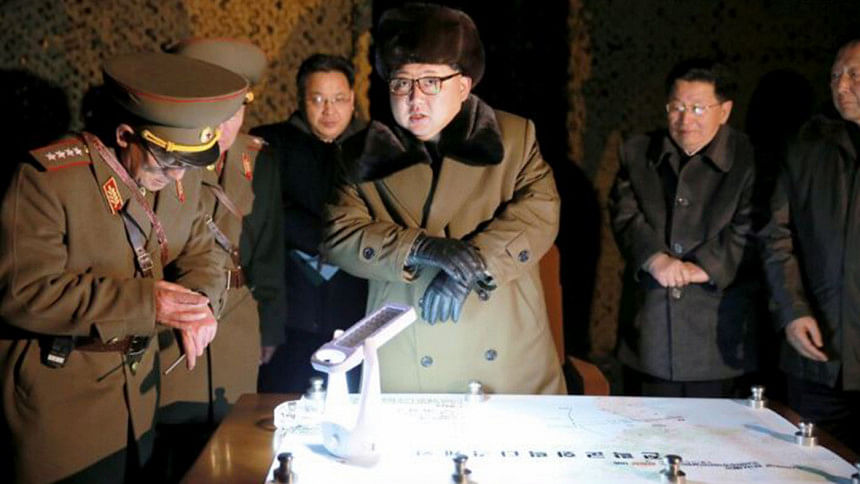North Korean nuclear experts lead lives as ‘slaves to the bomb’
North Korean nuclear scientists have no autonomy over their lives, with their life paths set for them in almost every aspect, including research fields, housing, food, and marriage, from the time they are elementary school students, according to The Chosun Ilbo report.
In a society where failure is viewed as disloyalty, they live under dehumanising conditions, forced to work relentlessly for the “task of the fatherland” until death, the report said.
There is a common belief that North Korea, which is heavily investing in missile and nuclear development, has 10,000 nuclear scientists working for it. However, based on an analysis by a Korean Peninsula expert located in Washington, DC, the reality is quite the opposite, according to The Chosun Ilbo report.
In his report “Slave to the Bomb,” released on Friday, Robert Collins, a 31-year veteran of the United States Forces Korea, provided a detailed account of the challenges faced by North Korean nuclear experts. Collins held the position of chief strategist for the South Korea-US Combined Forces Command (CFC). Testimonies from North Korean defectors he spoke with, and a variety of classified documents served as the foundation for his report.
“Outsiders assume that nuclear scientists are well-treated because nuclear energy is so important to Kim Jong Un and North Korea’s survival, but this is not the case,” Collins writes. “With the supreme leader demanding the development of sophisticated weapons capable of reaching the US mainland, nuclear scientists face a dangerous future with no way out but to succeed.”
The Chosunilbo was able to obtain a 200-page report ahead of time, which states that a child in North Korea can be deemed a “slave to the bomb” as early as ten years old. Under a system in place, North Korean administrative units — rural or urban — are able to identify and hire kids who demonstrate exceptional proficiency in science and mathematics.
“The best students from each region are gathered and trained in math, science, physics, and other subjects,” Collins states in the report. “If they stand out, their entire families are sometimes forced to move so that the students can advance to a higher-level school in the capital city.”
The most elite Middle School in Pyongyang’s Shinwon-dong, where the late North Korean leader Kim Jong-il attended, is a haven for gifted education and draws the most talented students from all over the country. According to the report, its students frequently compete internationally in events like the Math Olympiad.
The five universities that typically accept students chosen to work for North Korea’s nuclear programme include Kim Il Sung University, Kimchaek University of Technology, and Kanggye College of Technology.
The report states, “Once a nuclear scientist achieves significant academic success in a particular research field, their professional fate is sealed.” The only things that will change in their lives after that are the nuclear plant they work for and the standard of the housing that comes with it. They have to dedicate their lives to serving the Kim regime.
Additionally, these scientists have no “freedom of choice” because their marriage partners are predetermined in practice. Collins says, “Those who voice their displeasure face consequences and lose out on different advantages.” Nuclear scientists are allowed to study overseas, including at the Joint Institute for Nuclear Research (JINR) in Russia and the Harbin Institute of Technology in China, despite international sanctions against North Korea. The Harbin Institute of Technology had more than 1,000 North Korean students enrolled each year prior to the Covid-19 pandemic.
Where North Korean nuclear scientists are assigned to work has a big impact on their quality of life. According to the report, “North Korea has over 100 nuclear facilities, and about 40 of these are critical facilities that must be addressed in any future denuclearisation process.” These consist of five nuclear power plants and refineries, eight uranium mines, and fifteen nuclear research and supervision facilities. Scientists frequently have their workplace assigned to them based on their family background or so-called “background”. The least ideal place to work is the Punggye-ri Nuclear Test Site in North Hamgyong Province. At this location, six nuclear tests were carried out between 2006 and 2017.
LondonGBDESK//



Comments are closed.